Abstract
Arsenic, cadmium, and lead have been associated with various forms of cancer, nephrotoxicity, central nervous system effects, and cardiovascular disease in humans. Drinking water is a well-recognized pathway of exposure to these metals. To improve understanding of the temporal dimension of exposure to As, Cd, and Pb in drinking water, we obtained 381 samples of tap and/or tap/filtered water and self-reported rates of drinking water consumption from 73 members of a stratified random sample in Maryland. Data were collected at approximately 2-month intervals from September 1995 through September 1996. Concentrations of As (range < 0.2-13.8 microg/L) and Pb (< 0.1-13.4 microg/L) were within the ranges reported for the United States, as were the rates of drinking water consumption (median < 0.1-4.1 L/day). Cd was present at a detectable level in only 8.1% of the water samples. Mean log-transformed concentrations and exposures for As and Pb varied significantly among sampling cycles and among respondents, as did rates of drinking water consumption, according to a generalized linear model that accounted for potential correlation among repeated measures from the same respondent. We used the intraclass correlation coefficient of reliability to attribute the total variance observed for each exposure metric to between-person and within-person variability. Between-person variability was estimated to account for 67, 81, and 55% of the total variance in drinking water consumption, As exposure (micrograms per day), and Pb exposure (micrograms per day), respectively. We discuss these results with respect to their implications for future exposure assessment research, quantitative risk assessment, and environmental epidemiology.
Full text
PDF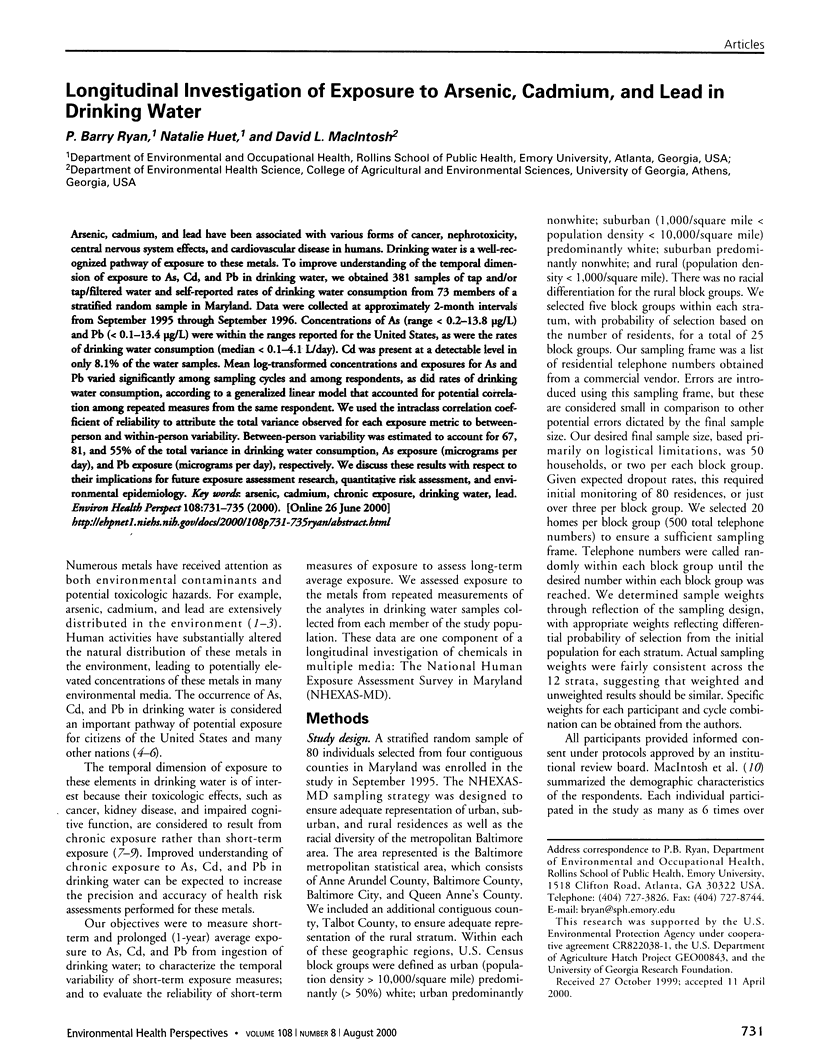
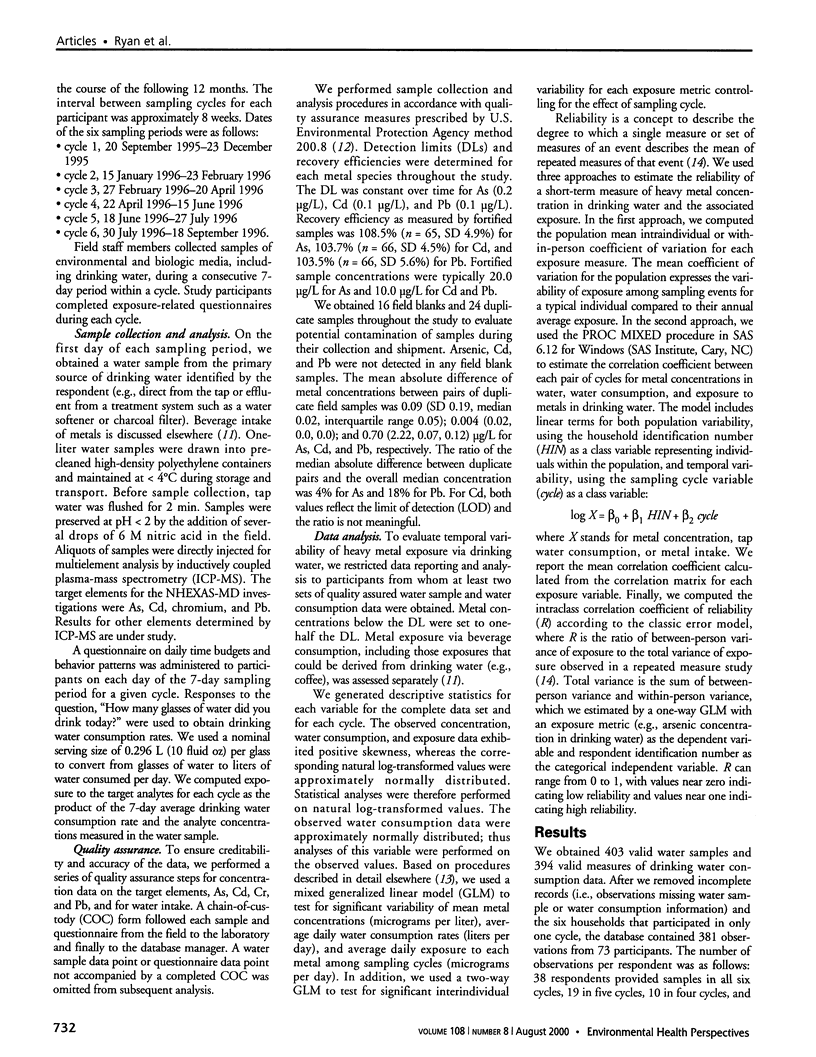
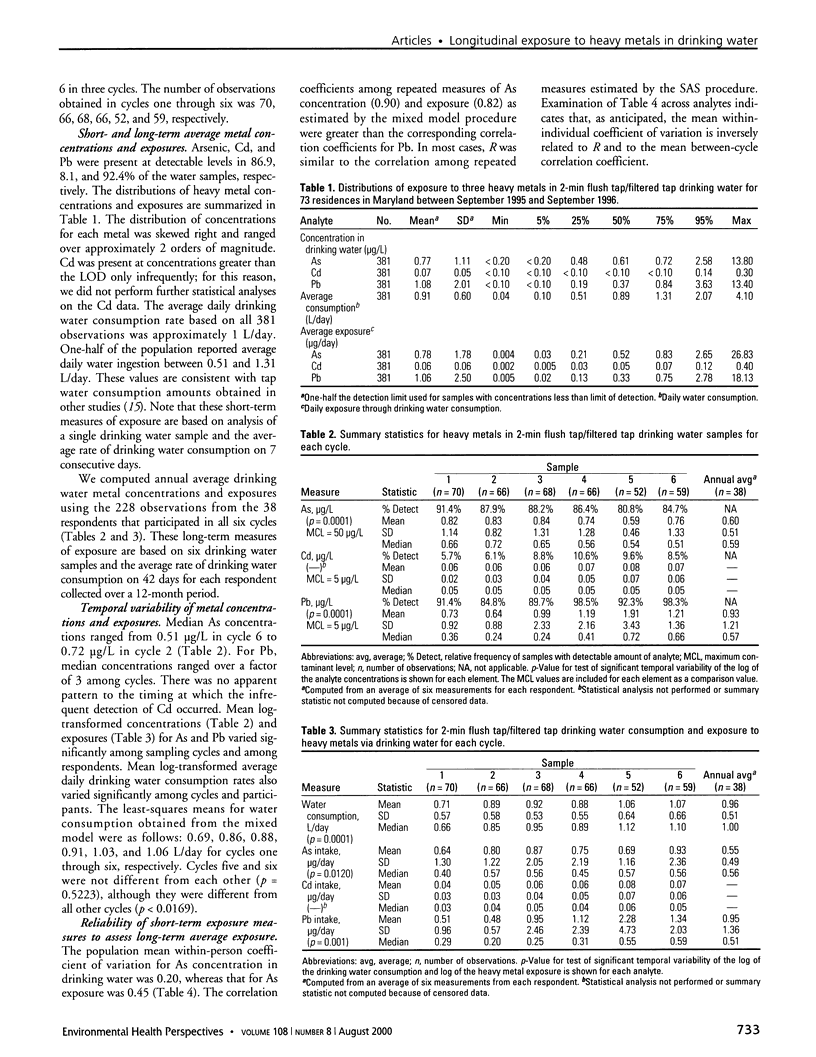
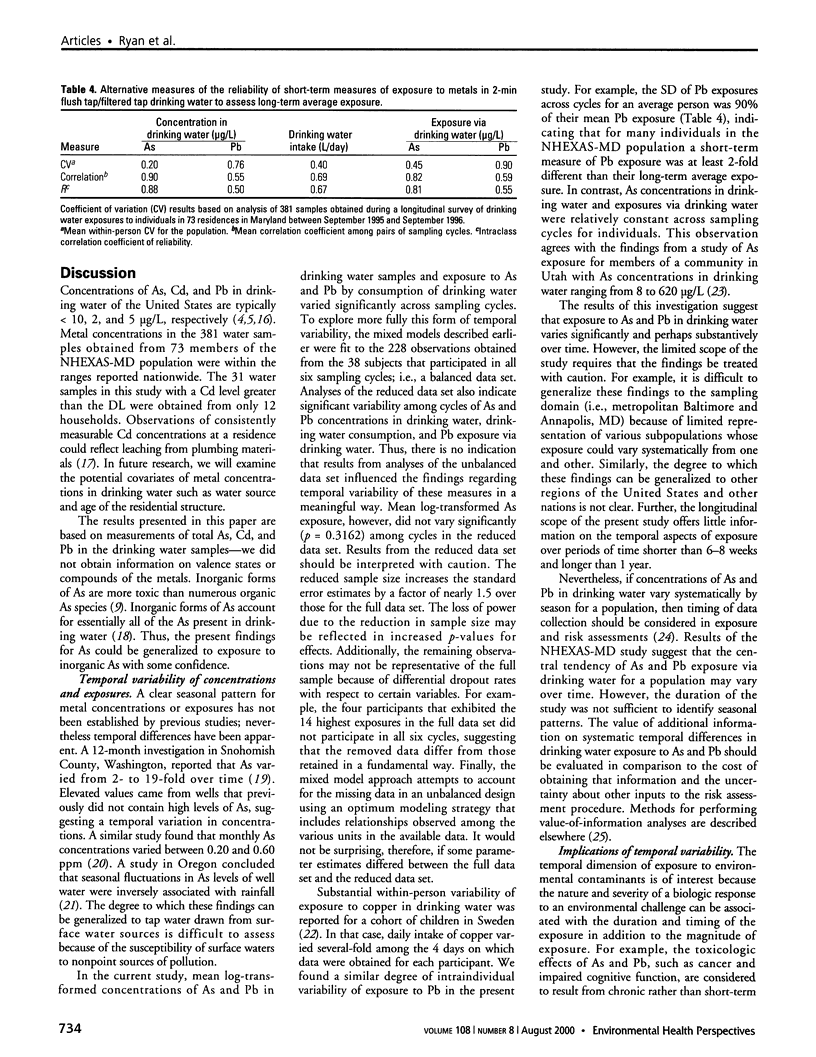
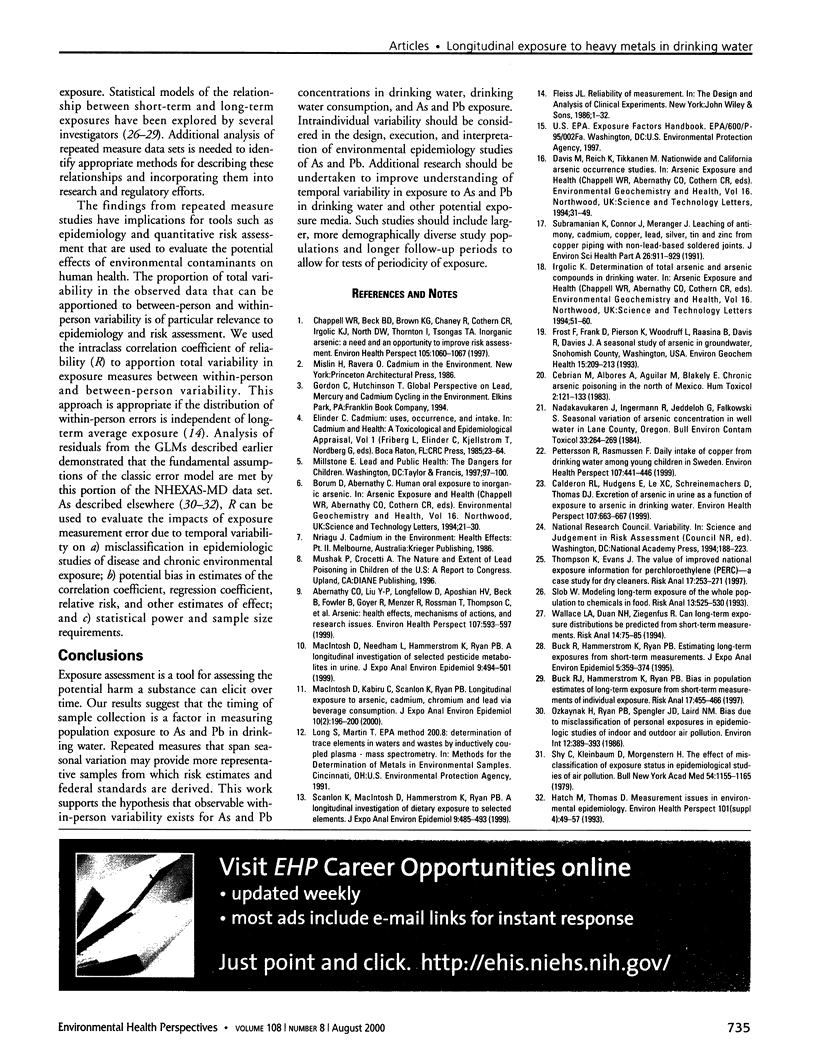
Selected References
These references are in PubMed. This may not be the complete list of references from this article.
- Abernathy C. O., Liu Y. P., Longfellow D., Aposhian H. V., Beck B., Fowler B., Goyer R., Menzer R., Rossman T., Thompson C. Arsenic: health effects, mechanisms of actions, and research issues. Environ Health Perspect. 1999 Jul;107(7):593–597. doi: 10.1289/ehp.99107593. [DOI] [PMC free article] [PubMed] [Google Scholar]
- Buck R. J., Hammerstrom K. A., Ryan P. B. Estimating long-term exposures from short-term measurements. J Expo Anal Environ Epidemiol. 1995 Jul-Sep;5(3):359–373. [PubMed] [Google Scholar]
- Calderon R. L., Hudgens E., Le X. C., Schreinemachers D., Thomas D. J. Excretion of arsenic in urine as a function of exposure to arsenic in drinking water. Environ Health Perspect. 1999 Aug;107(8):663–667. doi: 10.1289/ehp.99107663. [DOI] [PMC free article] [PubMed] [Google Scholar]
- Cebrián M. E., Albores A., Aguilar M., Blakely E. Chronic arsenic poisoning in the north of Mexico. Hum Toxicol. 1983 Jan;2(1):121–133. doi: 10.1177/096032718300200110. [DOI] [PubMed] [Google Scholar]
- Chappell W. R., Beck B. D., Brown K. G., Chaney R., Cothern R., Cothern C. R., Irgolic K. J., North D. W., Thornton I., Tsongas T. A. Inorganic arsenic: a need and an opportunity to improve risk assessment. Environ Health Perspect. 1997 Oct;105(10):1060–1067. doi: 10.1289/ehp.971051060. [DOI] [PMC free article] [PubMed] [Google Scholar]
- Hatch M., Thomas D. Measurement issues in environmental epidemiology. Environ Health Perspect. 1993 Dec;101 (Suppl 4):49–57. doi: 10.1289/ehp.93101s449. [DOI] [PMC free article] [PubMed] [Google Scholar]
- MacIntosh D. L., Kabiru C., Scanlon K. A., Ryan P. B. Longitudinal investigation of exposure to arsenic, cadmium, chromium and lead via beverage consumption. J Expo Anal Environ Epidemiol. 2000 Mar-Apr;10(2):196–205. doi: 10.1038/sj.jea.7500082. [DOI] [PubMed] [Google Scholar]
- MacIntosh D. L., Needham L. L., Hammerstrom K. A., Ryan P. B. A longitudinal investigation of selected pesticide metabolites in urine. J Expo Anal Environ Epidemiol. 1999 Sep-Oct;9(5):494–501. doi: 10.1038/sj.jea.7500045. [DOI] [PubMed] [Google Scholar]
- Nadakavukaren J. J., Ingermann R. L., Jeddeloh G., Falkowski S. J. Seasonal variation of arsenic concentration in well water in Lane County, Oregon. Bull Environ Contam Toxicol. 1984 Sep;33(3):264–269. doi: 10.1007/BF01625541. [DOI] [PubMed] [Google Scholar]
- Pettersson R., Rasmussen F. Daily intake of copper from drinking water among young children in Sweden. Environ Health Perspect. 1999 Jun;107(6):441–446. doi: 10.1289/ehp.99107441. [DOI] [PMC free article] [PubMed] [Google Scholar]
- Powell J. J., Van de Water J., Gershwin M. E. Evidence for the role of environmental agents in the initiation or progression of autoimmune conditions. Environ Health Perspect. 1999 Oct;107 (Suppl 5):667–672. doi: 10.1289/ehp.99107s5667. [DOI] [PMC free article] [PubMed] [Google Scholar]
- Scanlon K. A., MacIntosh D. L., Hammerstrom K. A., Ryan P. B. A longitudinal investigation of solid-food based dietary exposure to selected elements. J Expo Anal Environ Epidemiol. 1999 Sep-Oct;9(5):485–493. doi: 10.1038/sj.jea.7500044. [DOI] [PubMed] [Google Scholar]
- Slob W. Modeling long-term exposure of the whole population to chemicals in food. Risk Anal. 1993 Oct;13(5):525–530. doi: 10.1111/j.1539-6924.1993.tb00011.x. [DOI] [PubMed] [Google Scholar]
- Wallace L. A., Duan N., Ziegenfus R. Can long-term exposure distributions be predicted from short-term measurements? Risk Anal. 1994 Feb;14(1):75–85. doi: 10.1111/j.1539-6924.1994.tb00029.x. [DOI] [PubMed] [Google Scholar]


